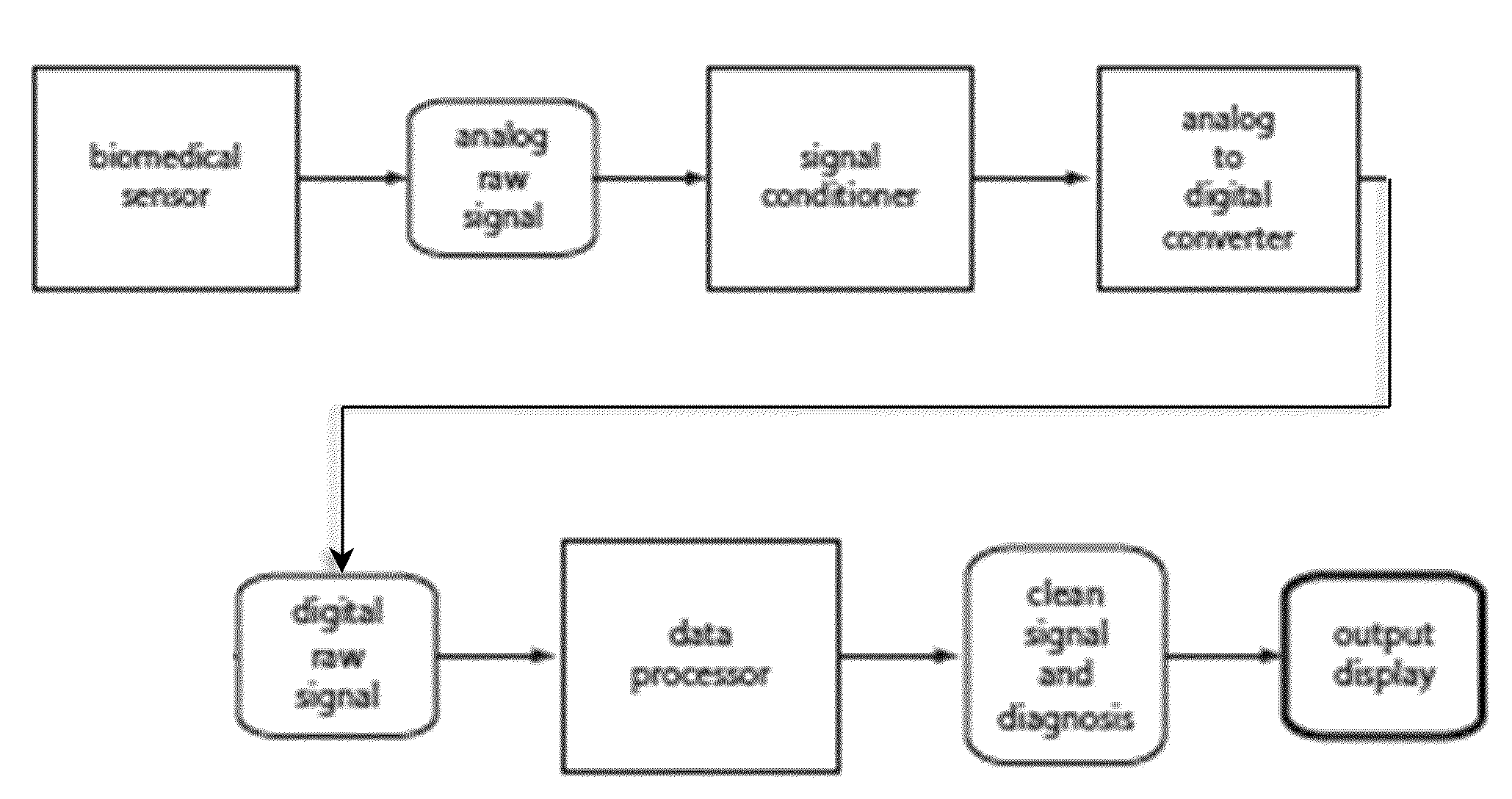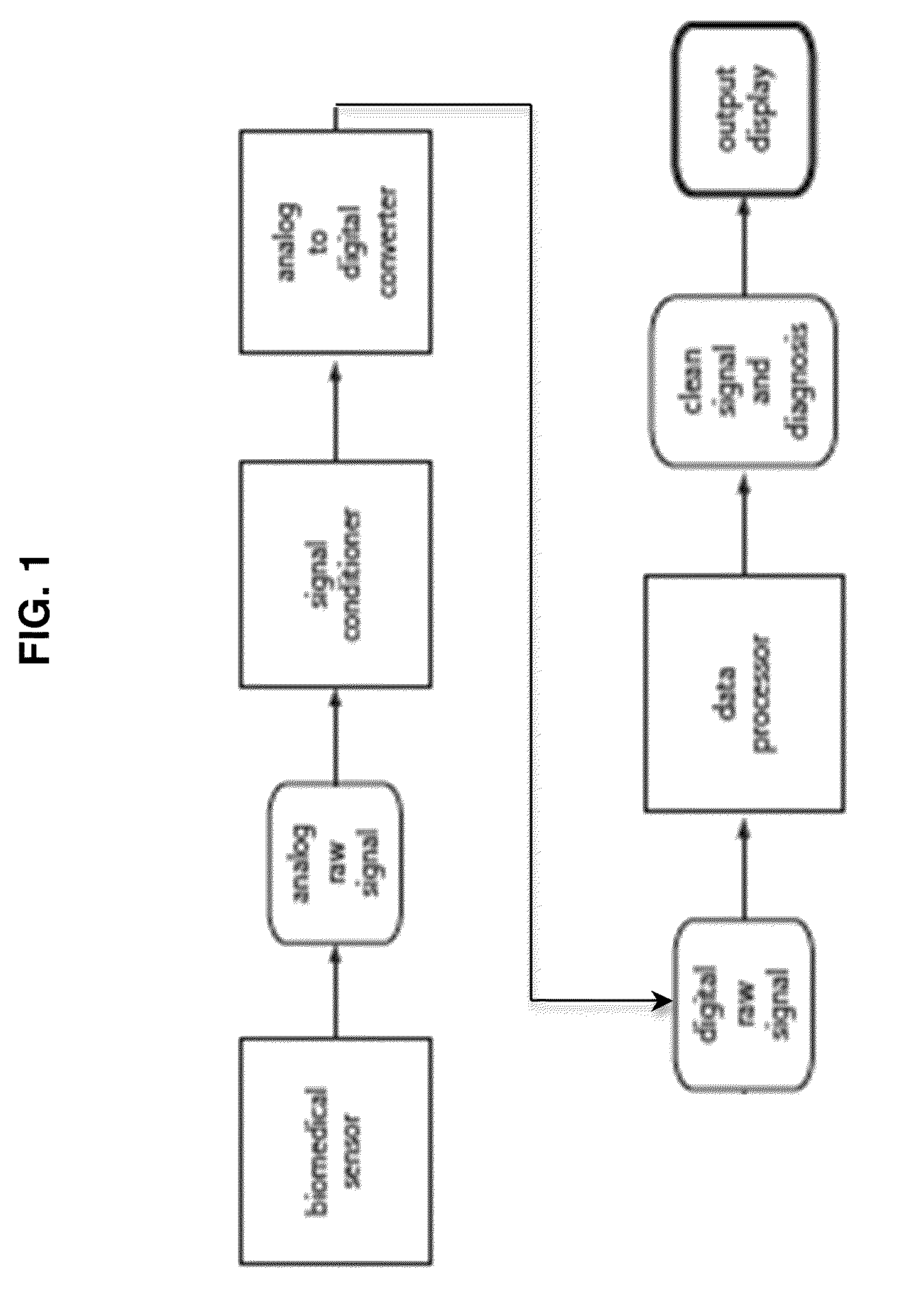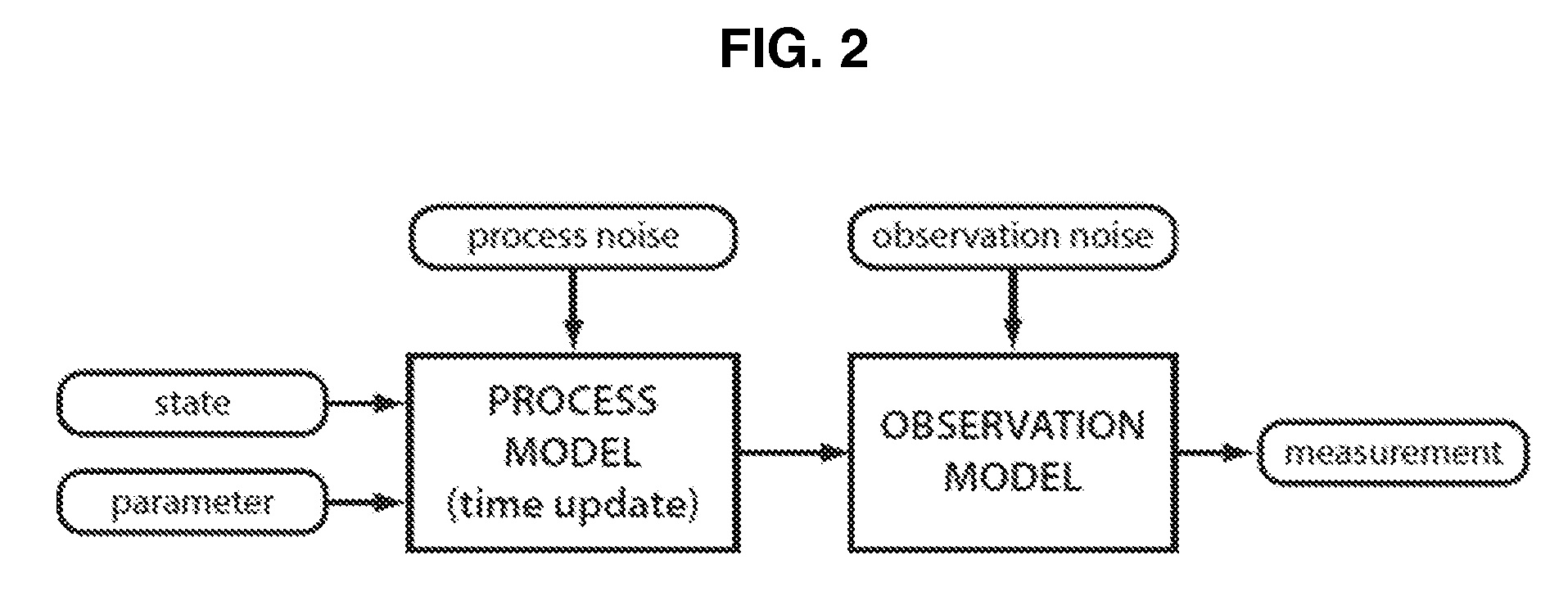Processing Physiological Sensor Data Using a Physiological Model Combined with a Probabilistic Processor
a sensor data and probabilistic processing technology, applied in the field of pulse oximeters, can solve the problems of inability to reliably remove simple filters, severe artifacts such as occasional signal dropouts, and difficult, if not impossible, to apply conventional filtering, etc., to achieve accurate and reliable measurement of physiological parameters
- Summary
- Abstract
- Description
- Claims
- Application Information
AI Technical Summary
Benefits of technology
Problems solved by technology
Method used
Image
Examples
examples
Pulse Oximeter with Probabilistic Data Processing
[0065]FIG. 8 shows the components of a DSSM suitable for processing data from a pulse oximeter model, including components required to describe processes occurring in a subject. FIG. 9 illustrates the DSSM broken down into process and observation models, and including all input and output variables. Heart rate (HR), stroke volume (SV) and whole-blood oxygen saturation (SpO2) are estimated from input noisy red and infrared intensity ratios (R). Radial (Pw) and aortic (Pao) pressures are also available as state estimates.
[0066]In this example, the DSSM comprises the following function to represent cardiac output:
QCO(t)=Q_CO∑k=16akexp[-(t_-bk)2ck2](31)
wherein cardiac output Qco(t), is expressed as a function of heart rate (HR) and stroke volume (SV) and where QCO=(HR×SV) / 60. The cardiac output function pumps blood into a Windkessel 3-element model of the vascular system including two state variables: aortic pressure, Pao, and radial (Win...
PUM
 Login to View More
Login to View More Abstract
Description
Claims
Application Information
 Login to View More
Login to View More - R&D
- Intellectual Property
- Life Sciences
- Materials
- Tech Scout
- Unparalleled Data Quality
- Higher Quality Content
- 60% Fewer Hallucinations
Browse by: Latest US Patents, China's latest patents, Technical Efficacy Thesaurus, Application Domain, Technology Topic, Popular Technical Reports.
© 2025 PatSnap. All rights reserved.Legal|Privacy policy|Modern Slavery Act Transparency Statement|Sitemap|About US| Contact US: help@patsnap.com



